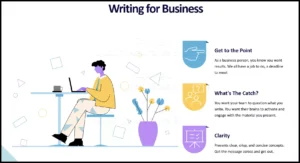The art of crafting product descriptions that convert is a crucial, yet often overlooked, aspect of ecommerce success. When done correctly, a well-written product description can be the difference between a customer adding to cart and abandoning their shopping journey altogether. It’s not just about listing features and benefits – it’s about telling a story, evoking emotions, and creating a sense of urgency that drives sales. But, with so many products vying for attention online, how do you write product descriptions that truly stand out from the crowd and drive conversions? In this post, we’ll dive into the secrets of writing product descriptions that sell, and provide you tips to help you craft compelling copy that resonates with your target audience and drives sales.
The importance of product descriptions in ecommerce
In the world of ecommerce, product descriptions play a crucial role in the buying decision-making process. They are the silent salesperson, working tirelessly behind the scenes to convince potential customers to make a purchase. A well-crafted product description can mean the difference between a sale and a bounce, making it a vital component of any online store’s success. When done correctly, product descriptions can paint a vivid picture of your product, highlighting its features, benefits, and unique value proposition. They can also address potential concerns, alleviate doubts, and build trust with your target audience. In fact, research has shown that high-quality product descriptions can increase conversion rates by up to 30%, making them a vital element of any ecommerce strategy.
Tip 1: Know your target audience

Before you even begin to craft a product description, it’s essential to have a deep understanding of who your target audience is. Who are the people that will be reading your description? What are their pain points, desires, and motivations? What language do they use, and what resonates with them? Knowing your target audience inside and out is crucial to writing a product description that speaks directly to them and addresses their specific needs. Imagine you’re having a conversation with your ideal customer – what would you say to them? How would you describe your product in a way that resonates with them? When you know your audience, you can tailor your language, tone, and messaging to speak directly to them, increasing the chances of conversion and turning browsers into buyers.
Tips 2: Focus on benefits and create a sense of urgency

When it comes to crafting product descriptions that convert, it’s essential to shift your focus from listing features to highlighting benefits. Rather than simply telling your customers what your product can do, explain how it will make their lives better. How will it solve a problem, save them time, or make them feel? By focusing on the benefits, you’re speaking directly to your customer’s needs and desires, making them more likely to click that “buy now” button. Additionally, creating a sense of urgency can be a powerful motivator. Use time-limited offers, scarcity, or exclusive deals to encourage customers to make a purchase sooner rather than later. This will not only drive sales but also help to reduce cart abandonment rates and increase customer satisfaction.
Tip 3: Paint a vivid picture with words

The art of crafting a product description that transports your customers to a world of sensory delight. This is where the magic happens, and your product comes alive in the minds of your potential buyers. Painting a vivid picture with words is all about evoking emotions and sensations that make your customers feel like they can already experience the benefits of your product. By engaging the senses, you’re not just selling a product, you’re selling a feeling. Imagine describing a luxurious candle as “warm, golden light that wraps around you like a comforting hug, filling the air with the sweet, soothing scent of vanilla and honey.” Suddenly, your customers can almost smell the aroma, feel the warmth, and visualize the ambiance it creates.
Tips 4: Use storytelling and social proof

The art of persuasion is a delicate dance, and when it comes to crafting product descriptions that convert, storytelling and social proof are two powerful tools that can make all the difference. By weaving a narrative around your product, you can create an emotional connection with your customer, making them more invested in the purchase. Share the story behind the product, the inspiration behind its creation, or the problem it solves. This will help your customer imagine themselves using the product, and envision the benefits it can bring to their life. But don’t just stop there. Social proof is the secret sauce that can take your product description from good to great. When you incorporating customer testimonials, reviews, and ratings, you can build trust and credibility with your customer. They’ll see that others have used the product and achieved the desired results, making them more likely to take the leap and make a purchase.
Tip 5: Optimize for SEO and keep it concise
![]()
When it comes to crafting product descriptions that truly convert, it’s essential to strike a delicate balance between search engine optimization (SEO) and concise, scannable content. You want to make sure your product description is optimized for relevant keywords, so that customers can find your product when searching online. However, you also don’t want to sacrifice readability and clarity in the process. The key is to seamlessly integrate your target keywords into your product description, without making it sound like a robotic list of features. Through this, you’ll not only improve your product’s visibility in search engine results, but also make it more likely that customers will quickly understand the value of your product and make a purchase. To achieve this, focus on using short, punchy sentences and breaking up large blocks of text into easy-to-scan bullet points. This will make your product description easy to consume, even for customers who are quickly scanning through your page.
Tips 6: Proofread like a pro: Ensure clarity and trust

It’s astonishing how a single typo or grammatical error can erode trust and credibility with potential customers. A well-written product description that is free of errors sends a powerful message: you’re a professional who cares about the details. On the other hand, a sloppy description can raise concerns about the quality of the product itself. To proofread like a pro, take a step back from your writing and review it with fresh eyes. Read it out loud to catch any awkward phrasing or unclear sentences. Check for consistency in formatting, style, and tone. Use grammar and spell check tools to catch any mistakes. And, if possible, have a colleague or friend review your work to catch any errors you may have missed.
Tip 7: Calls to action: The final push

This is the point where you gently guide your potential customer’s hand, encouraging them to take the leap and make a purchase. A well-crafted call to action is the difference between a browser and a buyer, and it’s essential to get it right. Imagine a bright, shining button that beckons your customer to “Buy Now,” “Get Instant Access,” or “Limited Time Offer – Order Now!” The language you use should be direct, actionable, and instill a sense of urgency.
Conclusion: Putting it all together to write product descriptions that convert
With these 7 proven tips, you now have the power to transform your product descriptions from bland to grand, and turn casual browsers into loyal customers. Understanding your target audience, highlighting the benefits, and using persuasive language, you can create product descriptions that truly resonate with your customers. Integrating social proof, addressing pain points, and making it scannable, you can build trust and credibility with your audience. And by using a conversational tone and optimizing for SEO, you can make your product descriptions more discoverable and engaging. Remember, the key to writing product descriptions that convert is to focus on the customer, not the product. By putting the customer at the forefront of your writing, you’ll be able to craft descriptions that speak directly to their needs and desires, and ultimately drive sales and revenue for your business. So, take the time to craft product descriptions that truly sell, and watch your business thrive as a result.

